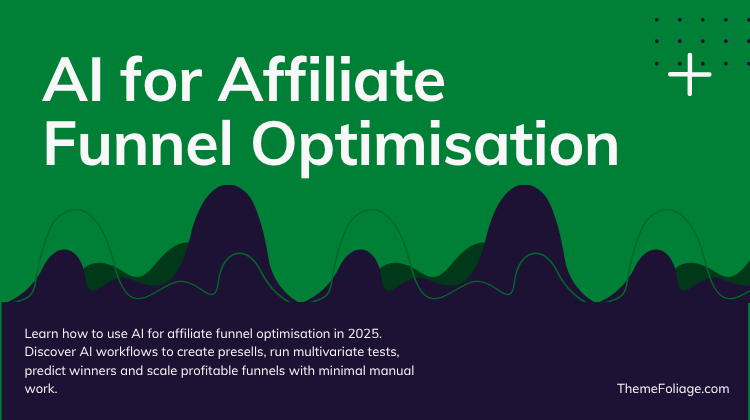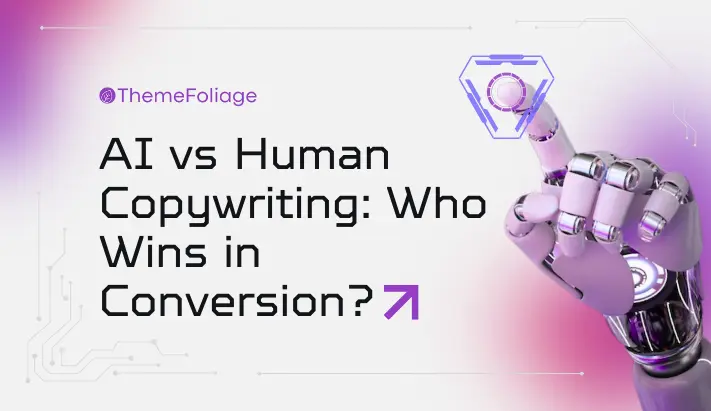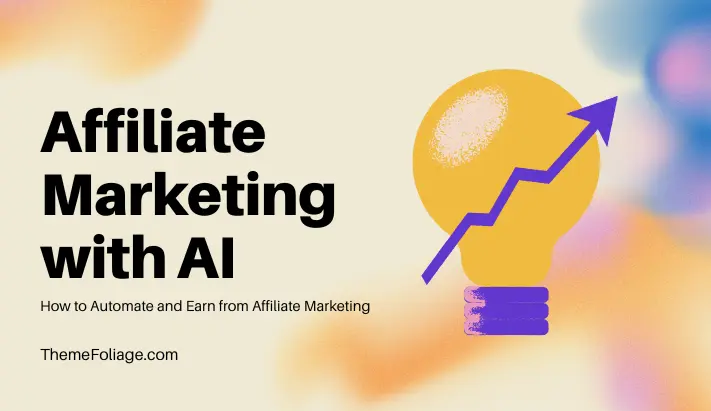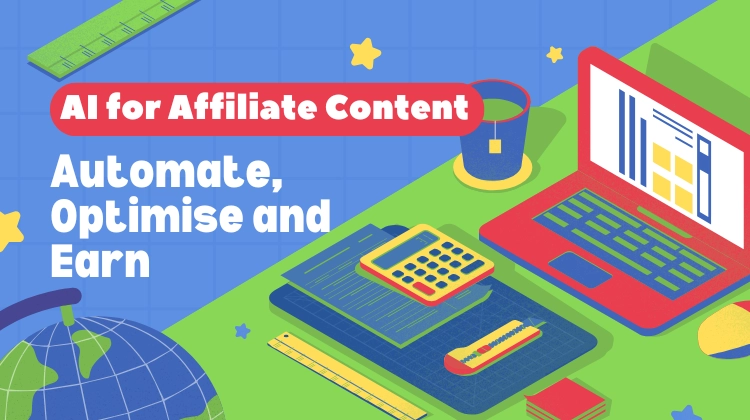Affiliate marketing in 2025 is a game of systems, not hustle. Top affiliates no longer rely on one‑off creatives and guesswork; they build funnels that learn and optimise themselves.
AI for affiliate funnel optimisation automates creative testing, predicts which presells will convert, allocates budget to winners and reduces creative fatigue, so you scale profitable offers faster and with less waste.
This guide shows how to design AI‑driven affiliate funnels, which tools to use (note: prices may change), concrete workflows you can implement today, and guardrails to protect ROI and compliance.
Why AI matters for affiliate funnels
- AI compresses the test cycle: run dozens of presells and creatives in parallel and let models identify winners.
- Predictive models reduce wasted spend by forecasting conversion probability before heavy traffic.
- Dynamic audience segmentation delivers the right presell to the right micro‑segment for higher EPC.
- Automated scaling rules let you blow up winners and shut down losers without manual ops.
- Creative automation combats fatigue by refreshing variants automatically based on engagement decay.
Put simply: AI turns funnel optimisation from art into repeatable engineering.
Core components of an AI optimised affiliate funnel
- Data ingestion and tracking: server‑side tracking, event collection, and reliable postback attribution.
- Presell generation and variant creation: AI generates multiple presell copy, hooks and layouts tailored to the offer and GEO.
- Multi-armed testing engine: multivariate and bandit testing that reallocates traffic to higher performers in real time.
- Predictive scoring: models estimate conversion probability and expected EPC for presell+audience combinations.
- Automated scaling & budget allocation: rules and ML allocate budget across channels and creatives.
- Feedback loop: conversions, returns, and refund signals retrain models to reduce false positives.
- Compliance & fraud signals: automated checks prevent banned creatives, questionable traffic, and policy violations.
Practical funnel blueprint (step‑by‑step)
- Assemble the data foundation
- Implement server‑side event tracking and aggregate conversions in a central store. Ensure reliable attribution for affiliate postbacks.
- Capture micro‑conversions (clicks, time on presell, scroll depth) for richer signals.
- Generate presells and creative variants
- Use AI copy and layout tools to create multiple presell variants per offer: variants of headline, angle, social proof, CTA and layout.
- Create modular creative assets (short video hooks, testimonial snippets, hero images) so DCO engines can recombine elements.
- Run automated parallel tests
- Deploy a multi‑armed bandit or Bayesian optimisation engine to test variants concurrently. Let traffic flow to better performers while still exploring new variants.
- Score presell+audience combos
- Train models on historical performance and current micro‑signals to predict conversion probability for each presell and audience slice. Use these scores to prioritise traffic.
- Automate budget flows and scaling
- Connect the optimisation layer with your ad platforms using rules and APIs: increase budget for high predicted EPC; pause variants with falling predicted value. Include safety caps to avoid runaway spend.
- Orchestrate retargeting layers
- Build retargeting funnels that adapt based on presell engagement: high‑intent viewers see tighter offers; low‑intent viewers get educational content. Use lookalike audiences trained on high‑intent cohorts.
- Close the loop and retrain
- Feed final outcomes sales, refunds, LTV back into the model, so prediction quality improves and the system learns which presells truly scale profitably.
AI workflows you can deploy today
Presell autopilot: input offer brief → AI generates 10 presell variations → run bandit test → system picks top 2 and scales.
Creative fatigue monitor: track engagement decay curves per creative; when engagement drops below threshold, AI generates refreshed hooks and swaps automatically.
Smart retargeting ladder: AI segments visitors into micro‑cohorts by intent and serves different presells or bonuses that maximise EPC.
Profit‑first bidding: models estimate expected EPC per click and instruct bids to maximise profit rather than clicks.
Recommended tools and stack (prices may change)
| Tool | Function | Typical use |
|---|---|---|
| Jasper / Copy.ai | AI presell copy generation | Create presell variants, emails |
| Pictory / OpusClip | Auto video snippets from long videos | Short ads, presell hero videos |
| Voluum / RedTrack | Affiliate tracking & traffic attribution | Server-side postbacks, cohort reporting |
| BrightBid / AdaptiveBid (example) | Predictive bidding & budget allocation | Bidding optimisation across channels |
| VWO / Optimizely | Multivariate testing & bandit engines | Parallel presell testing |
| AdCreative.ai | Ad creative generation & scoring | Generate ad variations, creatives |
| DCO tools (Adgreetz, CitrusAd) | Dynamic creative optimisation | Recombine modular assets in real time |
| Looker / BigQuery | Data warehouse & reporting | Aggregate events, train models |
Add a lightweight ML layer (Pecan AI, Vertex AI, or custom scikit‑learn pipelines) to run predictive scoring and budget allocation.
Measurement: what to track
- EPC (earnings per click) by presell, creative, GEO and audience segment
- Conversion rate and micro‑conversion signals (engagement, intent scores)
- ROI and ROAS after payouts and refunds
- Creative fatigue rate and time‑to‑refresh
- Model prediction accuracy and uplift vs control groups
- Incremental revenue from AI‑driven scaling (A/B holdout tests)
Always validate with holdout experiments to measure causal lift before committing heavy budget.
Compliance, fraud and ethical guardrails
Server‑side tracking reduces attribution leakage but requires strict consent and privacy handling. Use automated fraud detection to block suspicious IPs, bots and incentivised traffic that inflate clicks but not conversions.
Keep human review on high‑risk offers and creatives—AI can suggest, humans approve. Maintain clear disclosure where required by regional rules for affiliate content.
Common pitfalls and how to avoid them
- Chasing short-term CTR over profit: optimise for EPC and net profit, not superficial engagement metrics.
- Overfitting models to early winners: use robust validation and rolling windows to avoid false positives.
- Ignoring creative diversity: exploration is essential—set exploration budgets within bandit strategies.
- Poor data quality: incomplete postbacks or delayed refunds will mislead models—prioritise clean attribution.
- Compliance lapses: automating banned claims or health products without checks invites account bans.
Real‑world example (concise)
A multi‑GEO affiliate network used AI to generate 40 presell variants for a health offer, ran Bayesian optimisation across traffic sources, and implemented profit‑first bidding.
The AI system paused low‑EPC variants automatically and scaled high‑probability combos. Results in 8 weeks: EPC up 46%, overall ROI up 33% and creative production time cut by 70%.
Final thoughts
AI for affiliate funnel optimisation turns manual guesswork into a predictable growth engine. Start small: automate presell generation, instrument robust tracking, and run parallel testing with a bandit engine.
Use predictive scoring to prioritise traffic and automate scaling while enforcing strict compliance and profit safeguards. As models learn from outcomes, your funnels become self‑healing, killing losers, amplifying winners and delivering consistent, scalable affiliate revenue.



